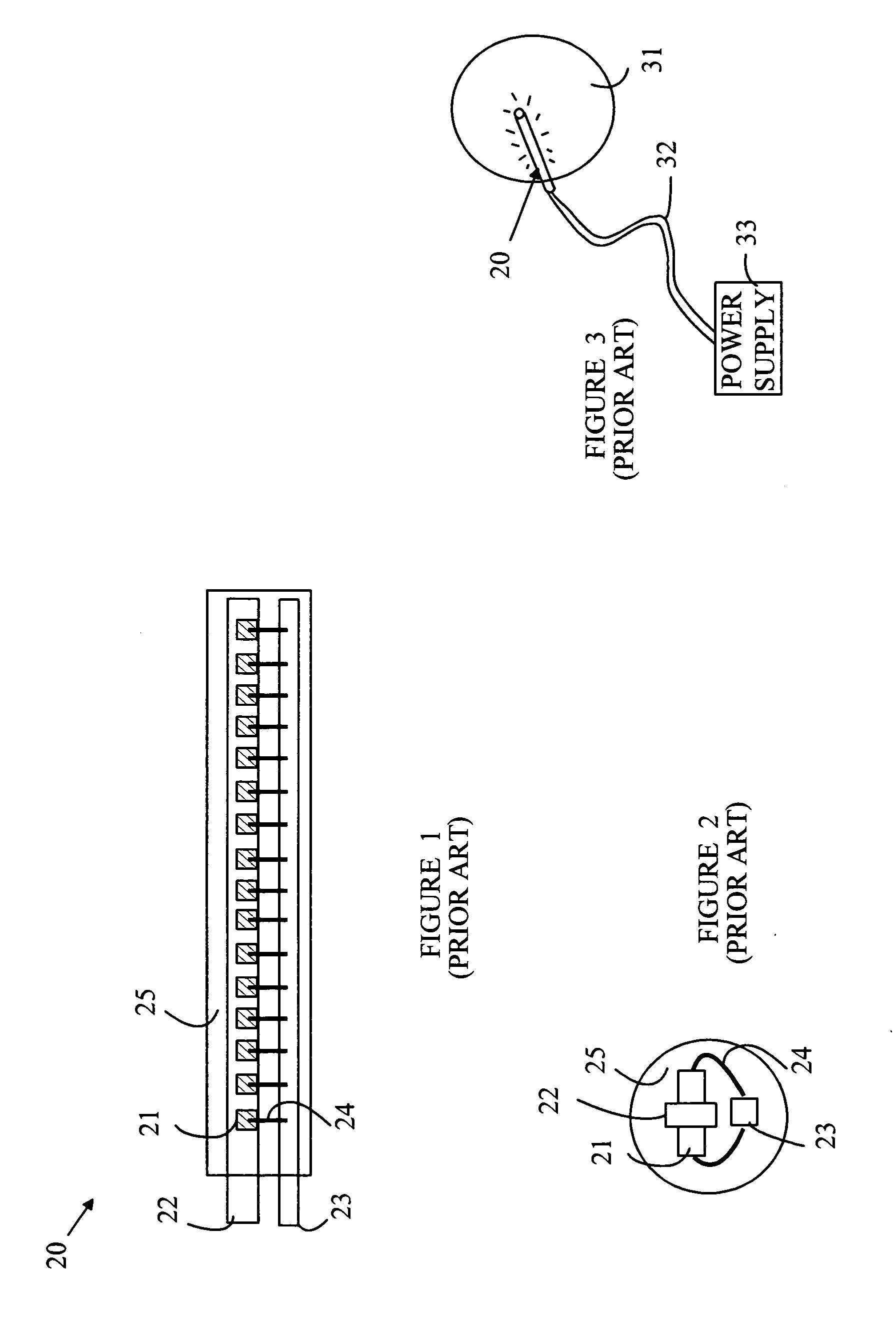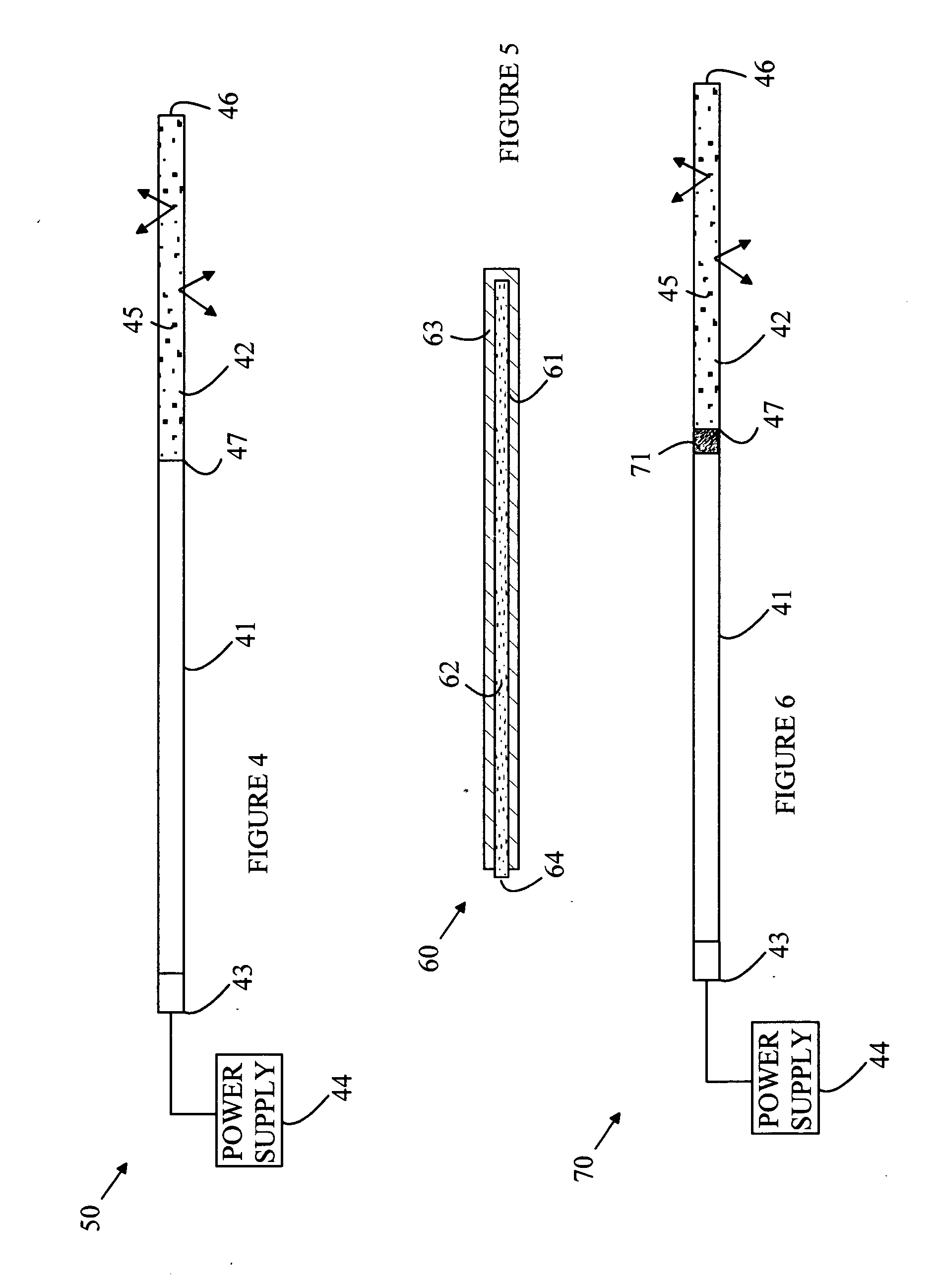Solid state light source adapted for remote illumination
a light source and solid state technology, applied in the direction of coupling devices, lighting and heating apparatus, radiation therapy, etc., can solve the problems of patient discomfort, patient exposure to excessive heat, and many potentially useful drugs are too toxic to be administered to patients at the desired dose, and achieve high conversion efficiency
- Summary
- Abstract
- Description
- Claims
- Application Information
AI Technical Summary
Benefits of technology
Problems solved by technology
Method used
Image
Examples
Embodiment Construction
[0020]The manner in which the present invention provides its advantages can be more easily understood with reference to FIGS. 1-3, which illustrate a prior art light bar and the manner in which it is placed in a patient's body during PDT. FIG. 1 is side view of light bar 20, and FIG. 2 is an end view of light bar 20. Light bar 20 is constructed from a plurality of LEDs such as LED 21. Each LED is connected to two conductors 22 and 23. The connections to conductor 22 are made from the bottom of the LED dies, and the connections to conductor 23 are made by wire bonds 24 that connect with a terminal on the top of each LED die. The assembly is encapsulated in a layer of clear medium 25. To provide illumination on both sides of conductor 22, two rows of LEDs are mounted on opposite sides of conductor 22.
[0021]Referring to FIG. 3, light bar 20 is inserted into a body 31 during PDT. Light bar 20 is powered by being connected to an external power supply 33 by a pair of wires 32. Since the w...
PUM
 Login to View More
Login to View More Abstract
Description
Claims
Application Information
 Login to View More
Login to View More - R&D
- Intellectual Property
- Life Sciences
- Materials
- Tech Scout
- Unparalleled Data Quality
- Higher Quality Content
- 60% Fewer Hallucinations
Browse by: Latest US Patents, China's latest patents, Technical Efficacy Thesaurus, Application Domain, Technology Topic, Popular Technical Reports.
© 2025 PatSnap. All rights reserved.Legal|Privacy policy|Modern Slavery Act Transparency Statement|Sitemap|About US| Contact US: help@patsnap.com



